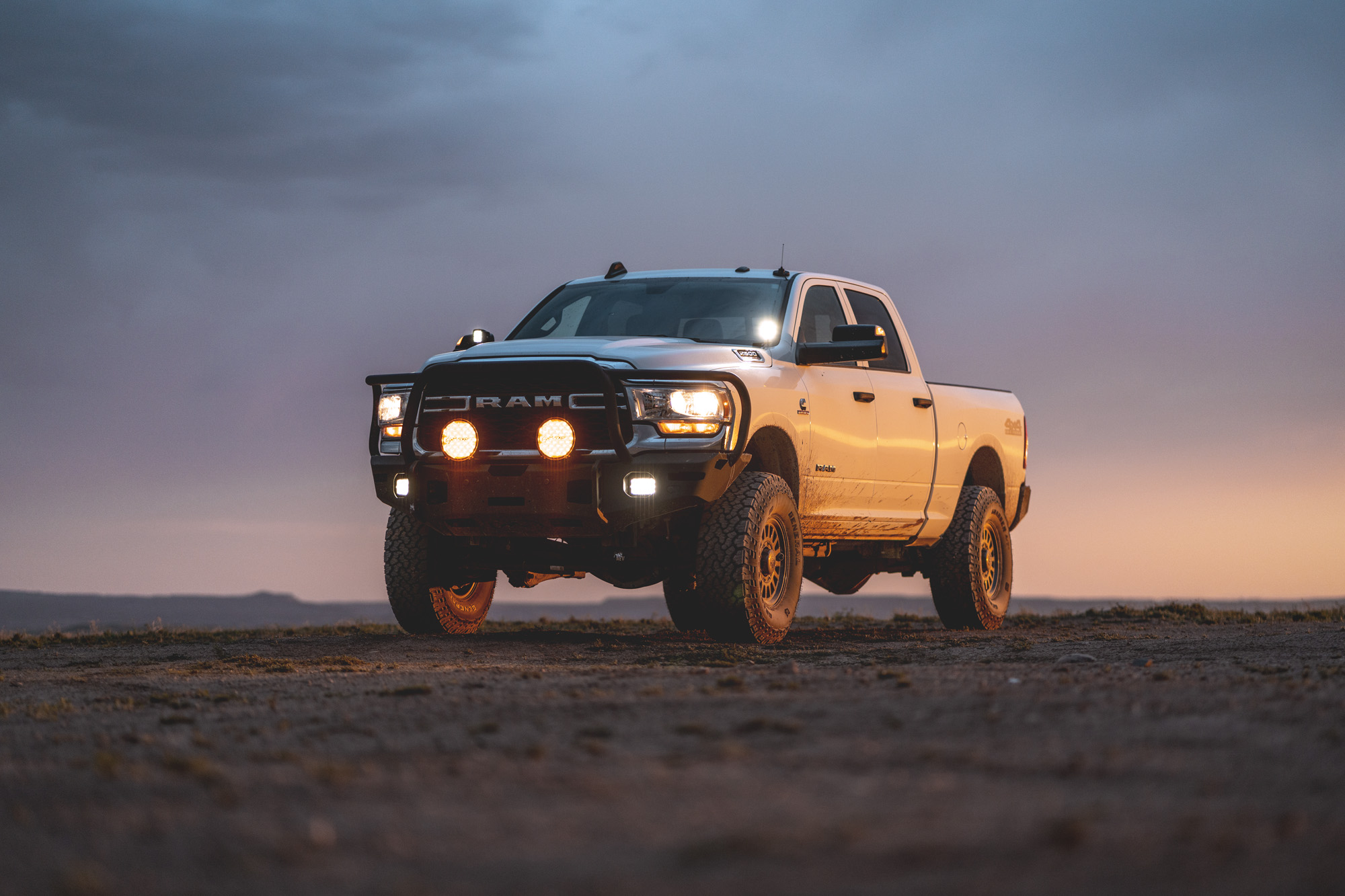Two important questions that I’ve asked myself throughout my Ram 2500 overland truck build are Will this upgrade add utility, and Will this upgrade enhance capability? Utilizing this decision-making framework is generally straightforward, but when it came to making changes to the suspension, I felt some uncertainty. I was interested in creating more wheel well clearance so that I could install larger tires, but I was hesitant to do anything that might reduce the quality and safety of the towing experience.
To be fair, the Ram 2500’s off-road-tuned suspension wasn’t letting me down. I’d tackled quite a few sections of challenging trail with the truck in its stock configuration. This includes driving half of the Imogene Pass road in southwestern Colorado without any significant difficulty (to be fair, I didn’t encounter any of the 3-foot ledges described by OnX).

Although I hadn’t experienced any limitations, I was still interested in adding additional ground clearance and comfort, but only if I could maintain my towing capability. I began doing some research but was quickly overwhelmed with information and opinions. To get some clarity around this subject, I connected with Mario Donovan at AT Overland, knowing he had extensive experience modifying various HD Ram trucks.
I mentioned my hesitation to install any kind of lift for fear that I might be affecting my truck’s ability to pull our trailer. Before answering my question, Mario educated me on the broader topic of suspension, which is only as good as the engineering behind it. That means that many components beyond the springs and shocks need to be taken into account for an aftermarket suspension to perform and hold up as good or better than OEM. Unfortunately, not every aftermarket manufacturer approaches their design this way, which ultimately leads to premature wear of components and reduced performance.
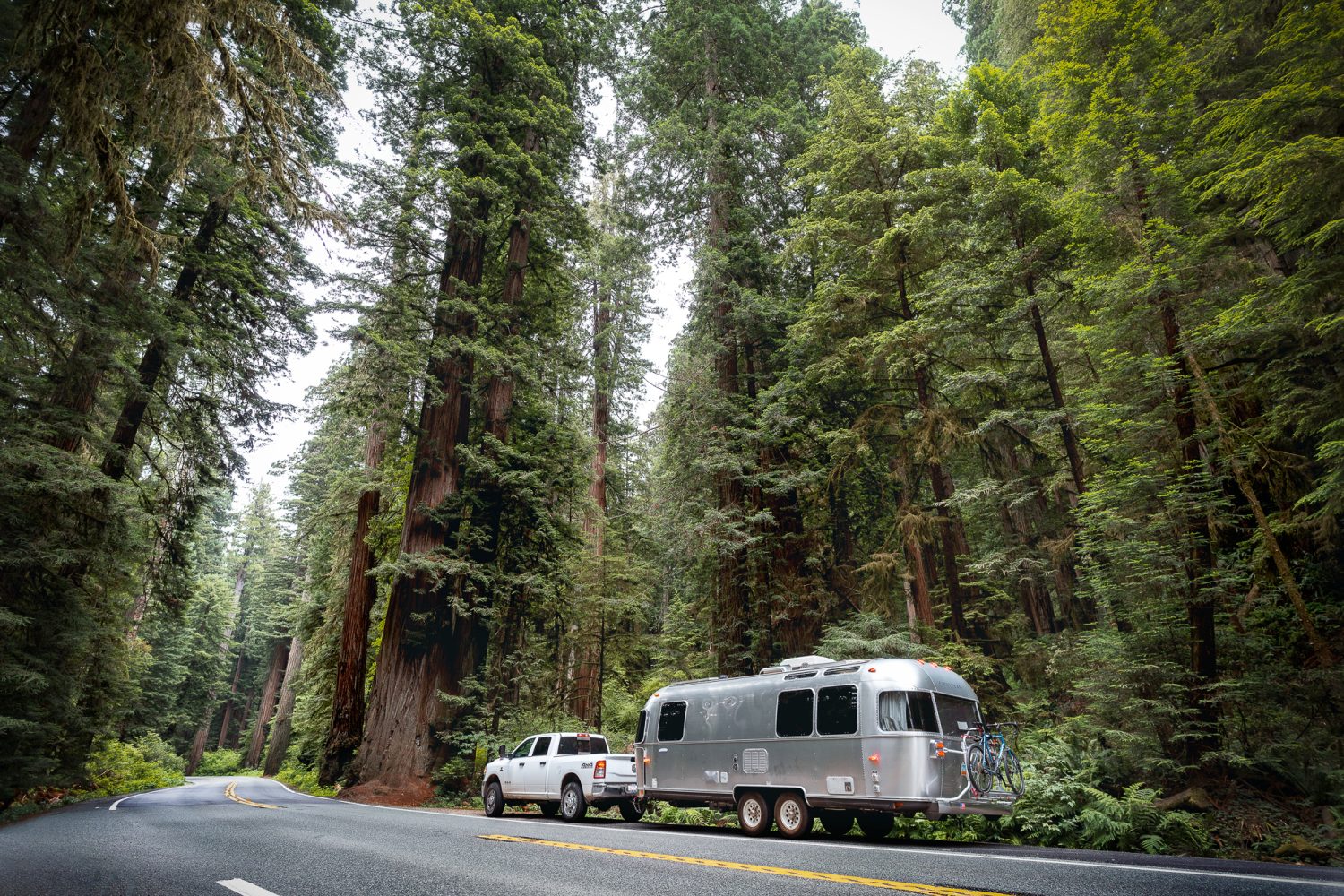
Towing our 25-foot Airstream International through Jedidiah Smith State Park in Northern California.
However, in the case of AEV, Mario’s recommendation for my particular situation, I wouldn’t have anything to worry about. In fact, I would experience improved performance on pavement and the trail. We talked further, and I expressed my concerns about a spacer lift, which was primarily based on misinformation. Mario reminded me of point number one; it all comes down to engineering and geometry.
With AEV’s Dualsport XP kit, spacers are utilized in conjunction with bolt-on adaptors to maintain proper geometry throughout the entire suspension. But because this kit utilizes spacers with the Ram’s OEM springs, factory towing/hauling specifications (with some nuance related to wheel/tire size) are maintained.

Aluminum spacers allow the AEV Dualsport XP suspension to utilize the OEM springs.
“Today’s marketplace offers dozens of solutions for anyone looking to modify their truck’s suspension, from mild to wild and everywhere in between. There is nothing wrong with having lots of options, but what about a well-engineered, properly tuned suspension system that is designed for the people who rely on their truck every day in the real world and the people who also don’t want to sacrifice payload, ride quality, or handling just to fit larger tires? That was the goal we set out to accomplish.
HD Rams trucks are built with dozens of different spring rates based on the powertrain, wheelbase, options, and more, so offering a generic “gas” or “diesel” spring would have been a huge compromise in ride quality and/or load carrying capacity. AEV retains the factory front coil springs and pairs them with 3-inch cast-aluminum coil spring relocation spacers to achieve the additional lift height. This allows AEV to take advantage of the full range of factory spring rates and frequencies while still providing the necessary front end lift.”
Feeling much more confident in my understanding of the Ram’s suspension and the considerations AEV put into designing their lift for the 2500 platform, I was eager to move forward with a lift and install 37-inch tires on the truck. I sourced AEV’s DualSport XP suspension, which had just seen an upgrade to Bilstein’s XP8100 remote reservoir shocks.
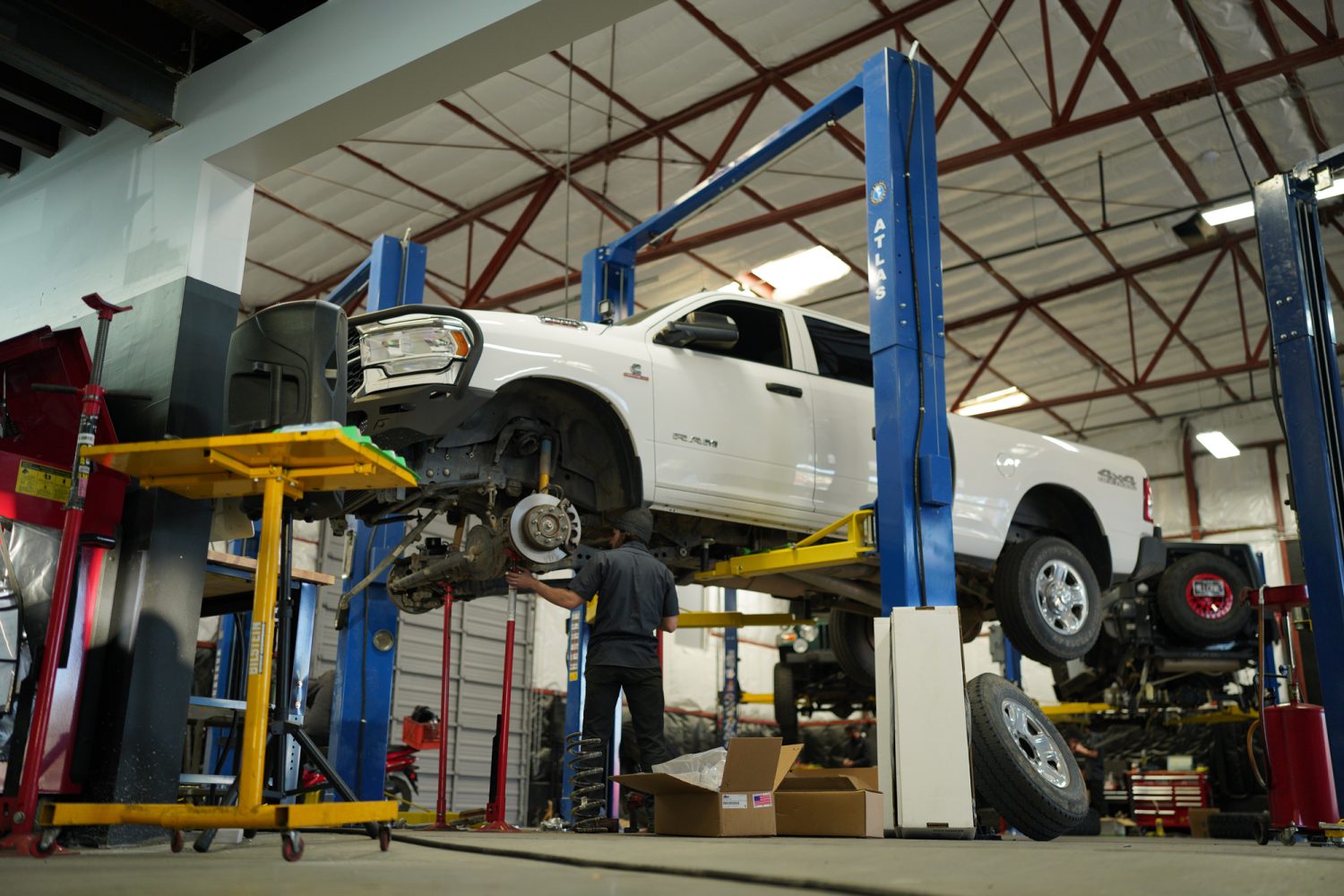
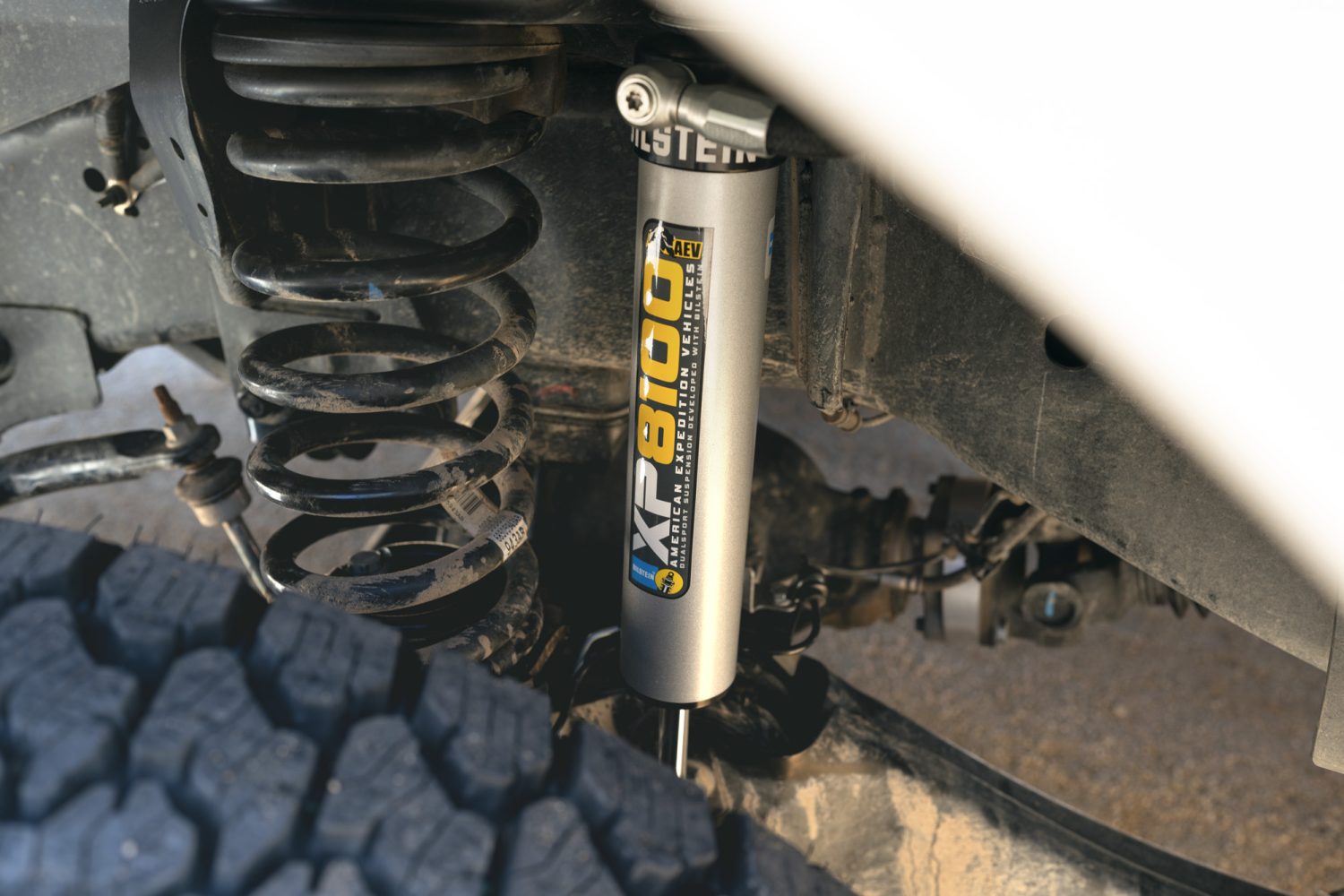
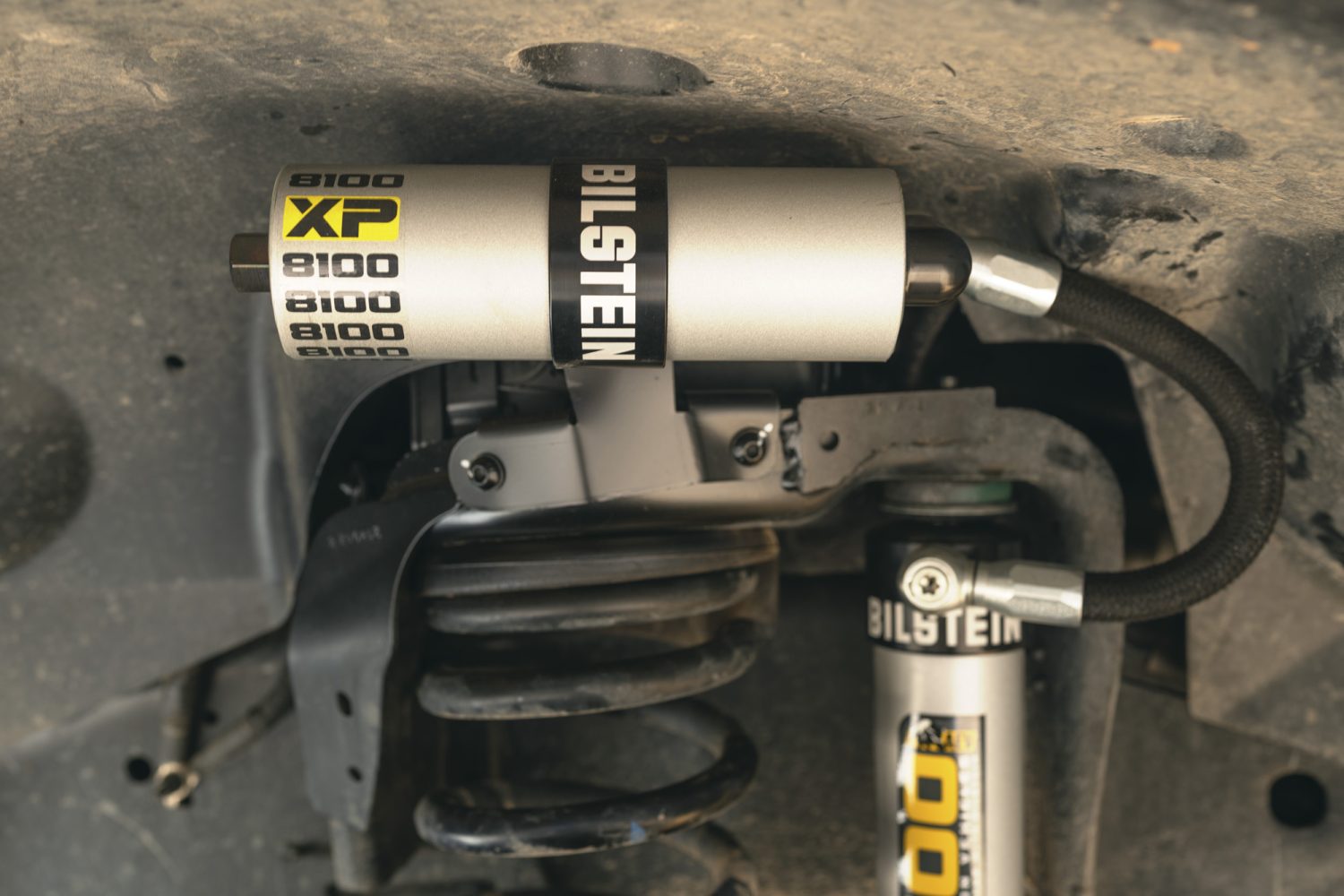
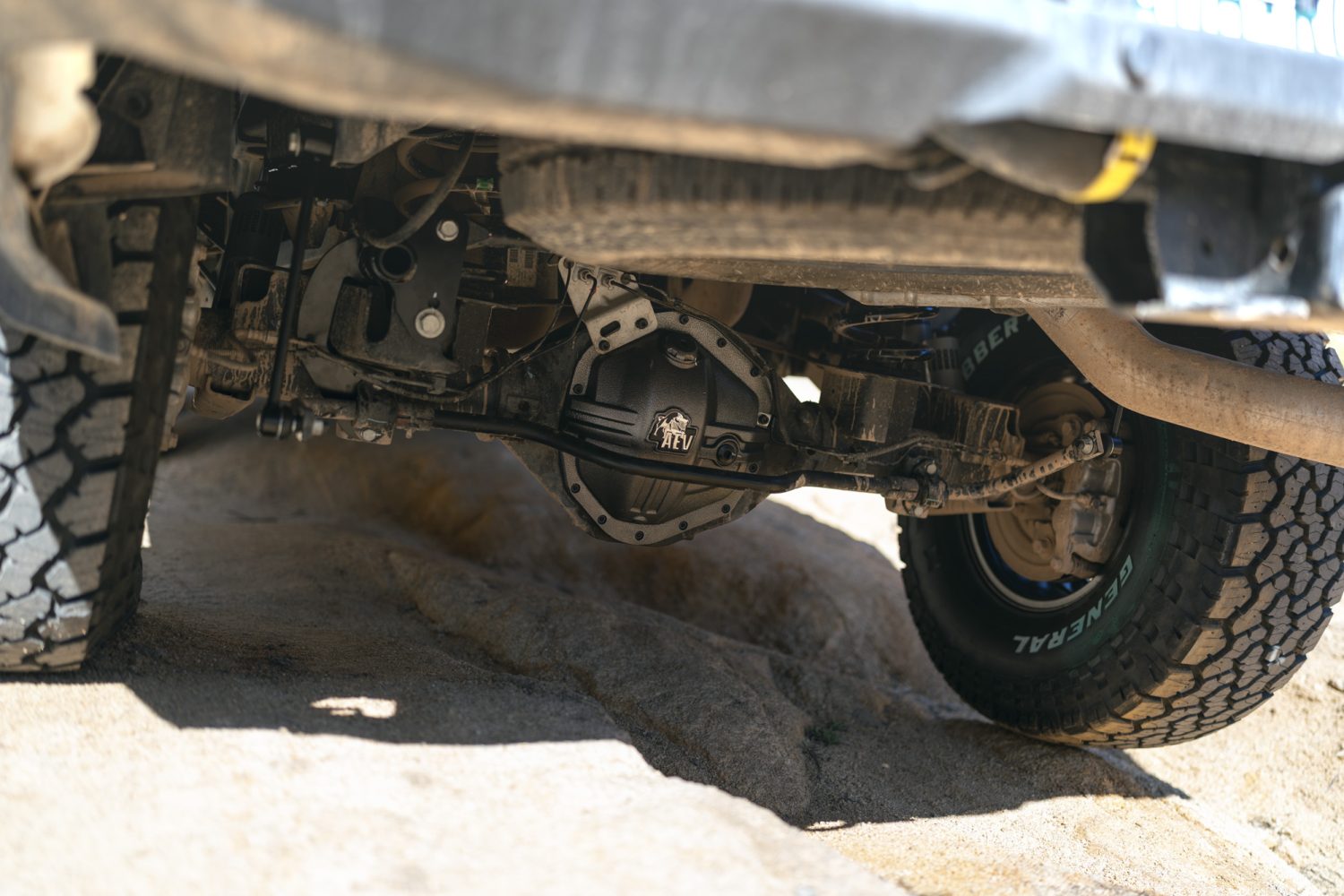
Installation was completed by the pros at Summit 4×4 in Prescott, AZ. AEV’s Dualsport XP suspension utilizes new Bilstein XP8100 shocks for a plush ride. Decided to replace the stock differential covers with AEV’s nodular iron version while we were having the lift installed.
With the new suspension decided on, it felt like an obvious time to upgrade my wheels too. I swapped out the chrome 18-inch rims for a set of AEV Salta HD 17-inch wheels in Onyx. This was largely a cosmetic upgrade, but the slightly smaller rim would give me even more rubber to work with when airing down, and as a bonus, the design of the Salta wheel protects the valve stem from damage on the trail.
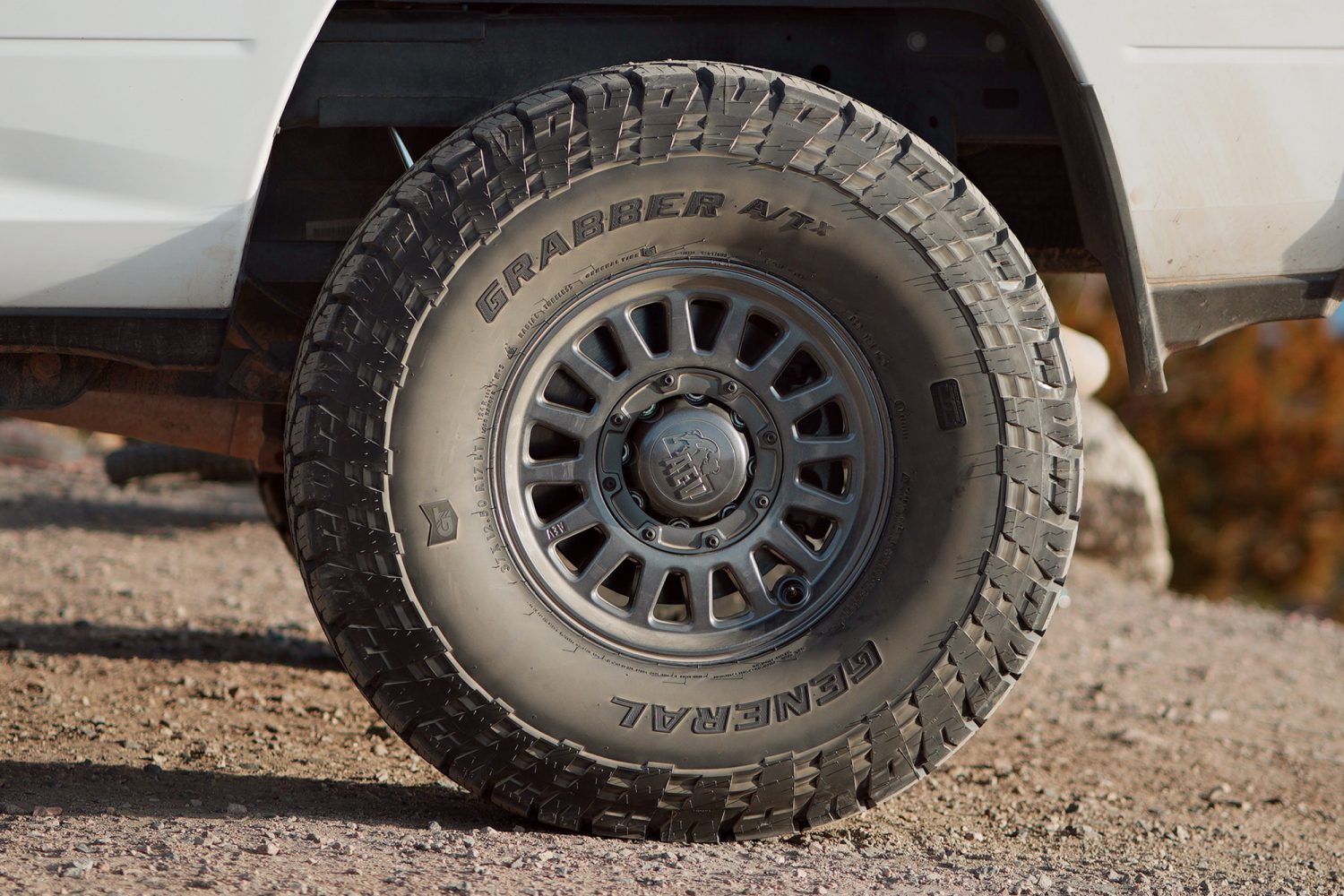
General Grabber A/Tx 37×12.5 tire mounted on 17-inch AEV Salta HD wheel in Onyx.
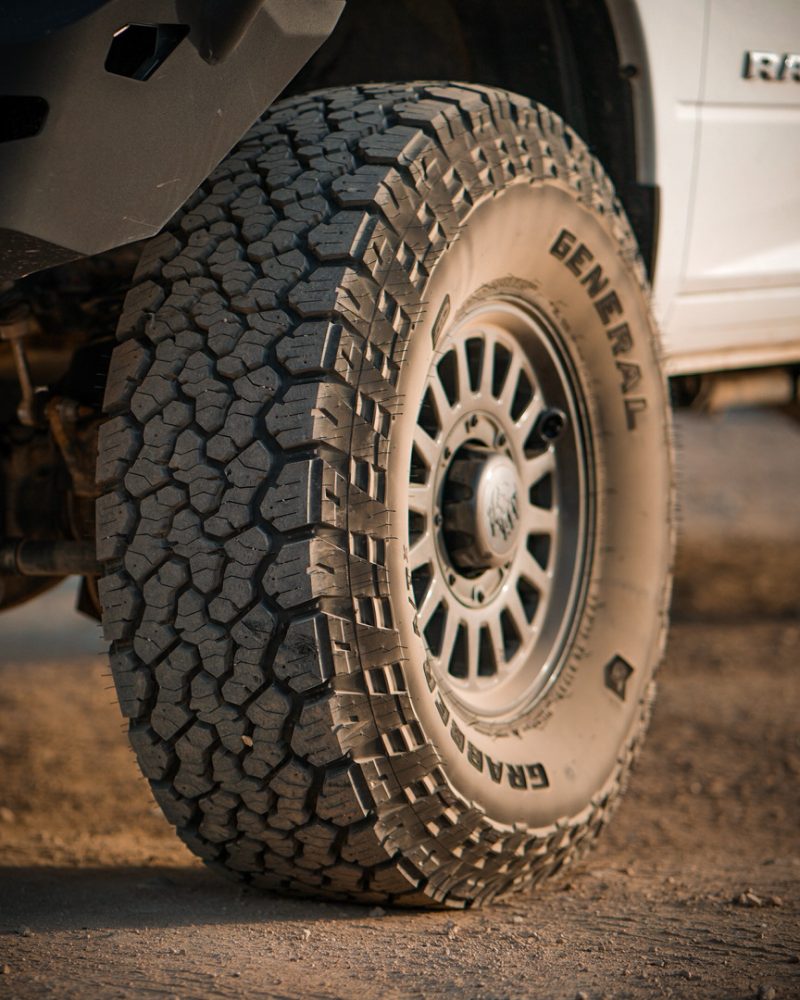
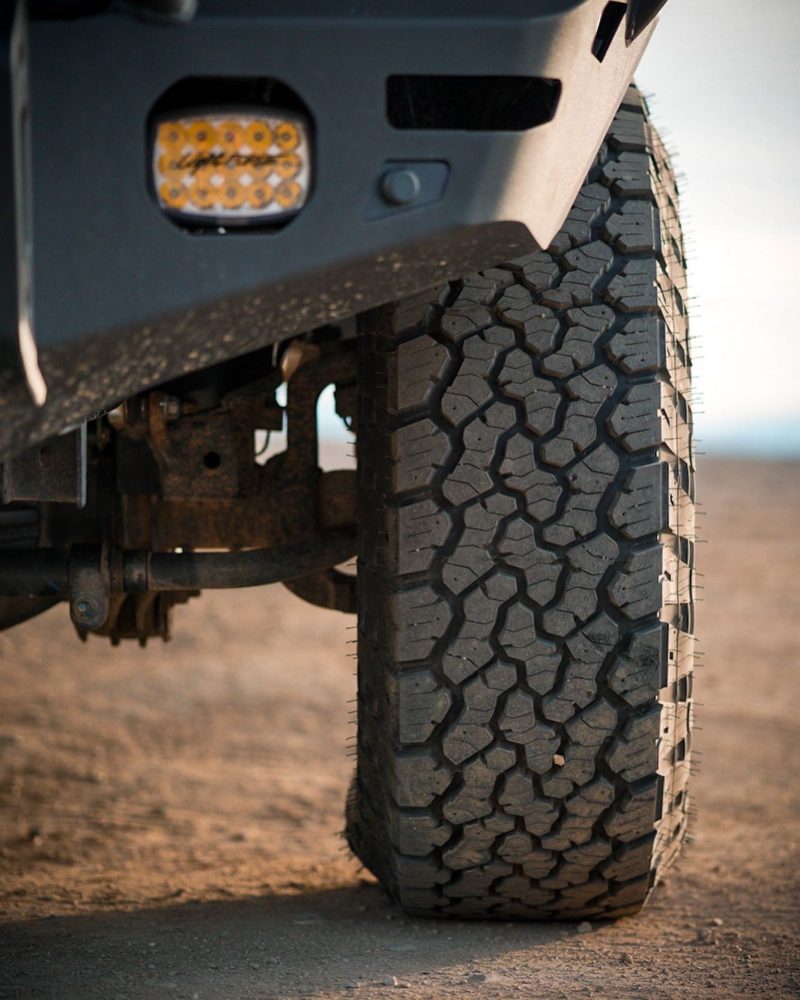
I reached out to General Tire (Continental) and, with their help, located a set of 37×12.5 R17 Grabber A/Tx tires. Having read many positive reviews of General Tire products from the crew at Expedition Overland, and after considering Chris Cordes’s review of the Grabber A/Tx, which he ran on his Excursion (while towing an Airstream—perfect), I felt confident that these aggressive AT tires would deliver added trail performance with excellent on-pavement characteristics.
General Grabber A/Tx tires:
- Max. cold operating pressure of 50 psi
- 60,000-mile limited warranty
- 3-star mountain snowflake rating and studdable
- Load index of 124 (3,527 pounds) per tire
- Rated for speeds up to 106 mph
AEV Dualsport XP Suspension: Initial Impressions
When the Ram rolled out of the bay at Summit’s shop, I hardly recognized it. The transition from a chrome 18-inch OEM wheel with a 33-inch tire to a 17-inch black alloy wheel with a 37-inch tire plus a three-inch lift makes a huge difference visually. Without running boards or rock sliders, stepping up into the driver’s seat felt a little difficult. The truck had taken on a much more aggressive, level appearance.
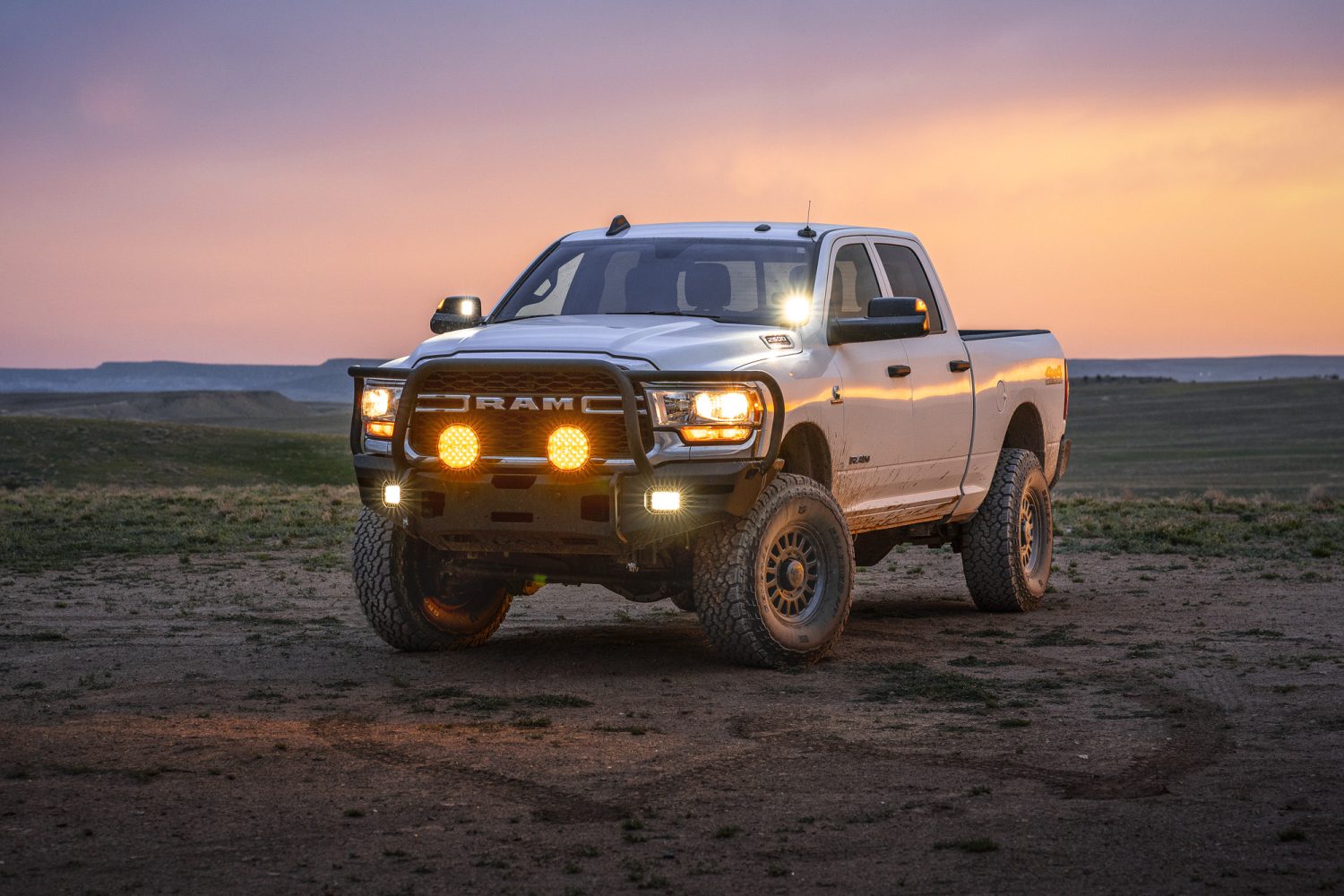
Not your average Tradesman. Ram 2500 with AEV Dualsport XP suspension installed.
When driving, I immediately noticed a difference that I could feel through the steering wheel: a heavier, more solid sensation that I attribute to the larger rotational mass of the new tire/wheel combo. I also noticed that turning the steering wheel required a tad more effort, despite the assistance of the truck’s power steering. I was also surprised by how much higher my position felt looking through the windshield down over the hood of the truck. In all aspects, the truck felt bigger, and it took me the better part of a week to get accustomed to this.
On pavement, there was an immediate improvement in ride comfort versus the OEM off-road-tuned suspension. Every bump, pothole, and crack felt smaller, softer, and less consequential. Shock rebound felt exponentially better, with more predictability and control when rolling over any irregularities. This experience was even more profound on the trail, with an extremely settled feeling, even after major suspension events. High-speed driving also felt improved, with less chatter and step-out around turns and a significantly smoother ride across washboards.
While the improved plushness and comfort can be attributed directly to shock performance/tuning, many of the off-road handling improvements can also be attributed to the larger tire diameter. This reduces angle of attack, effectively letting the tires roll over objects with less resistance. This is a well-documented benefit of a larger diameter wheel/tire combo and is well-documented in the mountain biking world, where a shift from a 26- to 29-inch wheel as a standard has taken place over the last decade.
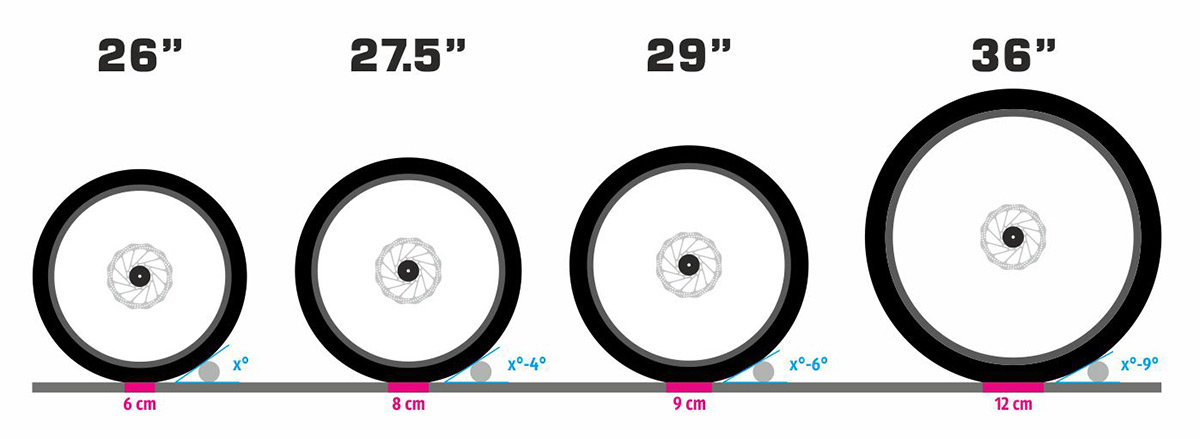
These are bicycle wheels, but this is still one of the best illustrations of angle of attack that I could find. Also, note the larger the tire, the larger the contact patch. Image via Bikerumor.com.
Finally, the truck’s traction felt greatly improved on loose surfaces thanks to the more aggressive tread pattern of the Grabber A/Tx. The tire’s lugs extend partially down the sidewalls and, when airing down, provide additional traction and protection on rocky terrain. Airing down also increases the tire contact patch and adds to the plushness/comfort of the ride on the trail.
Do you need to re-gear when installing larger tires?
I won’t go into detail on vehicle regearing, but it should be a consideration when switching from your OEM spec tire to a significantly larger one.
Because most of my mileage takes place on pavement and while towing, and because of the available torque of the Cummins 6.7 turbo-diesel, I have chosen to stick with my factory 3.73 gear ratio. This YouTube video does a great job of explaining why you may or may not want to regear when switching to a larger diameter tire.
AEV suspension performance after 5,000 miles
When it comes to testing and reporting on additions to the truck, the benefit of being a full-time traveler is that I log miles quickly: I’ve covered almost 5,000 since April 2022. The good news is that my experience with AEV’s Dualsport XP suspension and Grabber A/Tx tires has remained mostly positive. For those who want to get granular, here are some specifics:
Comfort: The comfort of the Duelsport XP suspension cannot be understated: it is a huge improvement over Ram’s OEM 4×4-tuned suspension. This statement applies to both highway and trail driving: unladen and when heavily-loaded towing/hauling. As was always the case with the heavy spring rates of the 2500, a moderate load makes things more comfortable than driving the truck completely empty.
While I don’t have experience driving a similarly-sized truck with any other high-performance aftermarket suspension (e.g., Carli, Thuren, etc.), the AEV kit has impressed me, and I have no hesitation recommending it to other HD Ram owners.
I’ve also experienced added comfort in off-highway terrain when airing down the truck’s larger 37-inch tires. This is one of the benefits associated with running a larger tire; they effectively add plushness to the quality of your ride, deforming around and absorbing impacts with objects on the trail (rocks, for instance). With my tire pressure dropped to 25 psi, I’m much happier with ride comfort on the trail.
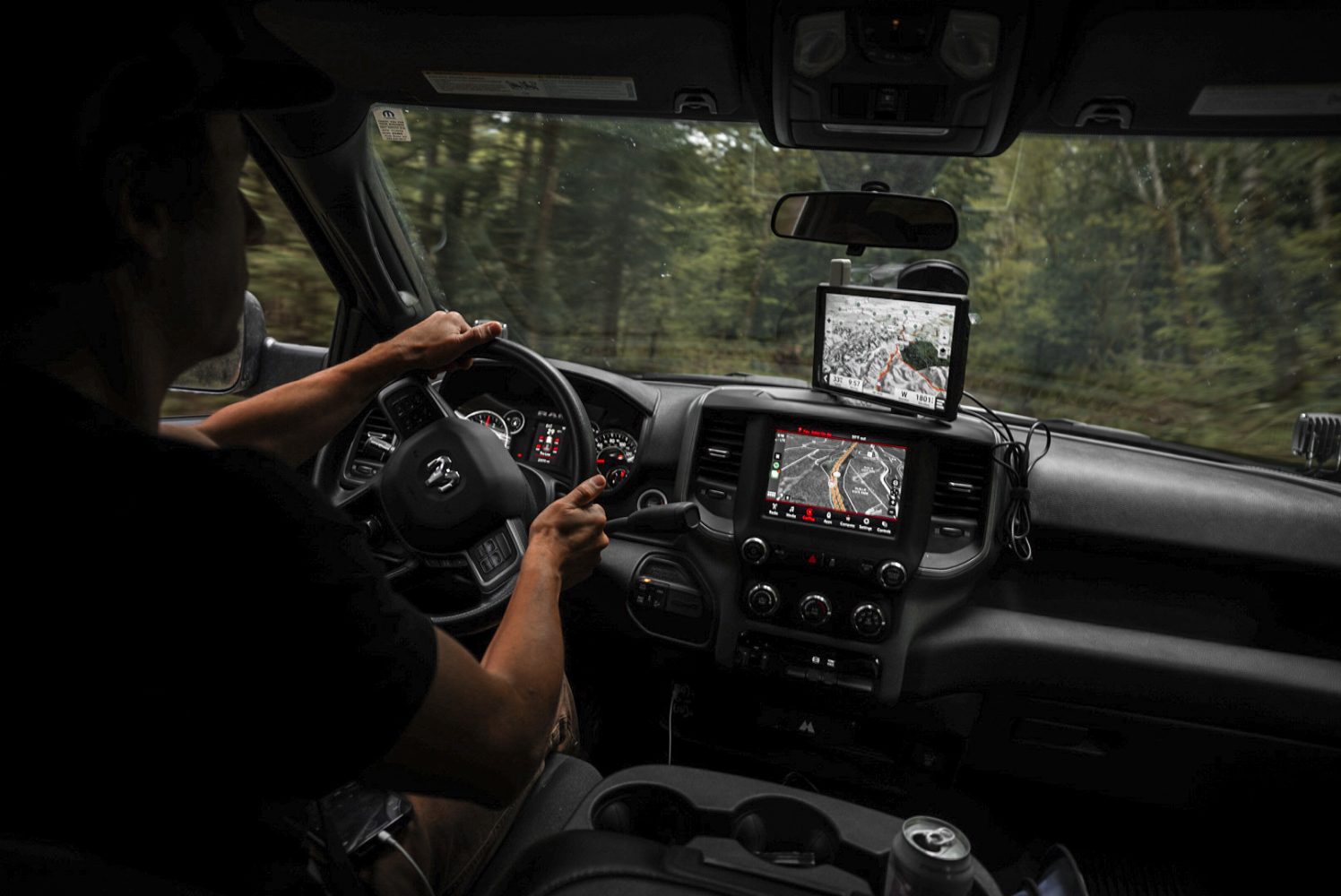
Performance on Pavement: Improved performance on pavement was noticeable immediately after the installation of the AEV lift. Specifically, the Dualsport XP has taken the edge off, making long drives much more comfortable. It does this without sacrificing handling characteristics.
I have also been pleasantly surprised that despite the 3-inch lift, and heavier, taller wheel/tire combo, I don’t notice any significant body roll beyond what felt normal with my OEM suspension.
The only negative consequence of the lift I can identify in terms of performance is a slight reduction of my visibility over the hood. This is due to a higher position overall and a modest leveling of the front of the truck (however, there is still front-end rake: approximately 1-inch). While this higher position is a small inconvenience that most drivers will get used to over time, it was quite noticeable in the first weeks after the lift installation.
Performance on Trail: I feel comfortable driving a bit faster on the trails than I previously would have. I experience less head-toss, better compression and rebound of the shocks, and a shallower approach to obstacles thanks to the larger diameter tires.
The increase in ground clearance from the new tire/wheel combo has also provided more confidence when navigating obstacles (although it’s not a lot, more on this below). These combined benefits result in less driver fatigue, which in turn, lets me approach longer, more technical trails comfortably.
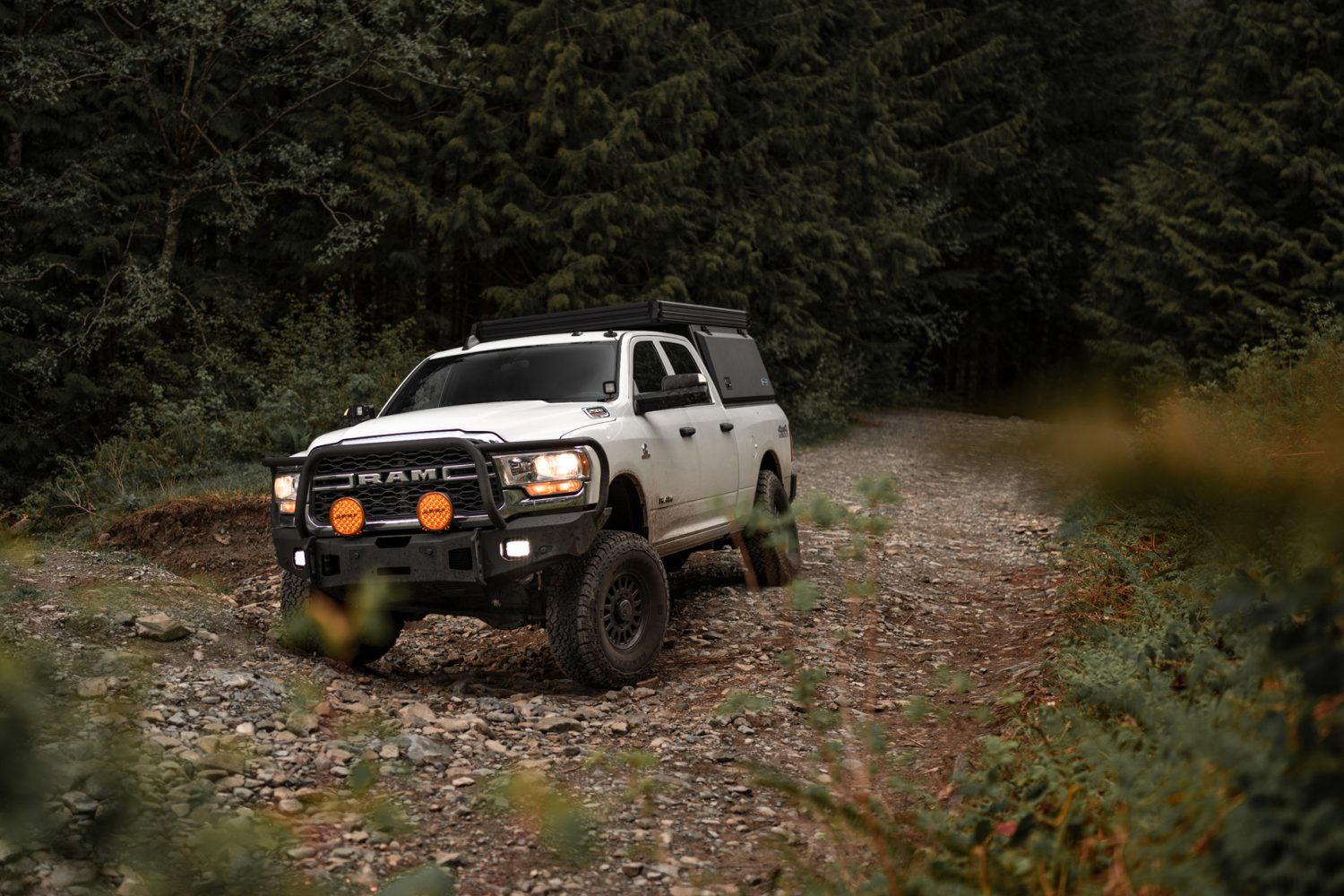
Spoiler alert…
I have gotten into the bump stops on one occasion when driving through an extensively potholed area with a little bit too much speed. And with the more aggressive tread pattern of the A/Tx, I do notice more gravel/rock retention versus OEM spec tires, which subsequently get flung out when transitioning back to pavement. This may be a cause for adding fender flares at some point to mitigate damage from these projectiles.
Ground Clearance: To be as objective as possible, I measured ground clearance prior to the AEV suspension installation at the lowest points with the OEM suspension and wheels. While you might assume that a 3-inch lift and 37-inch tires would add a lot of clearance, reality shows us something different.
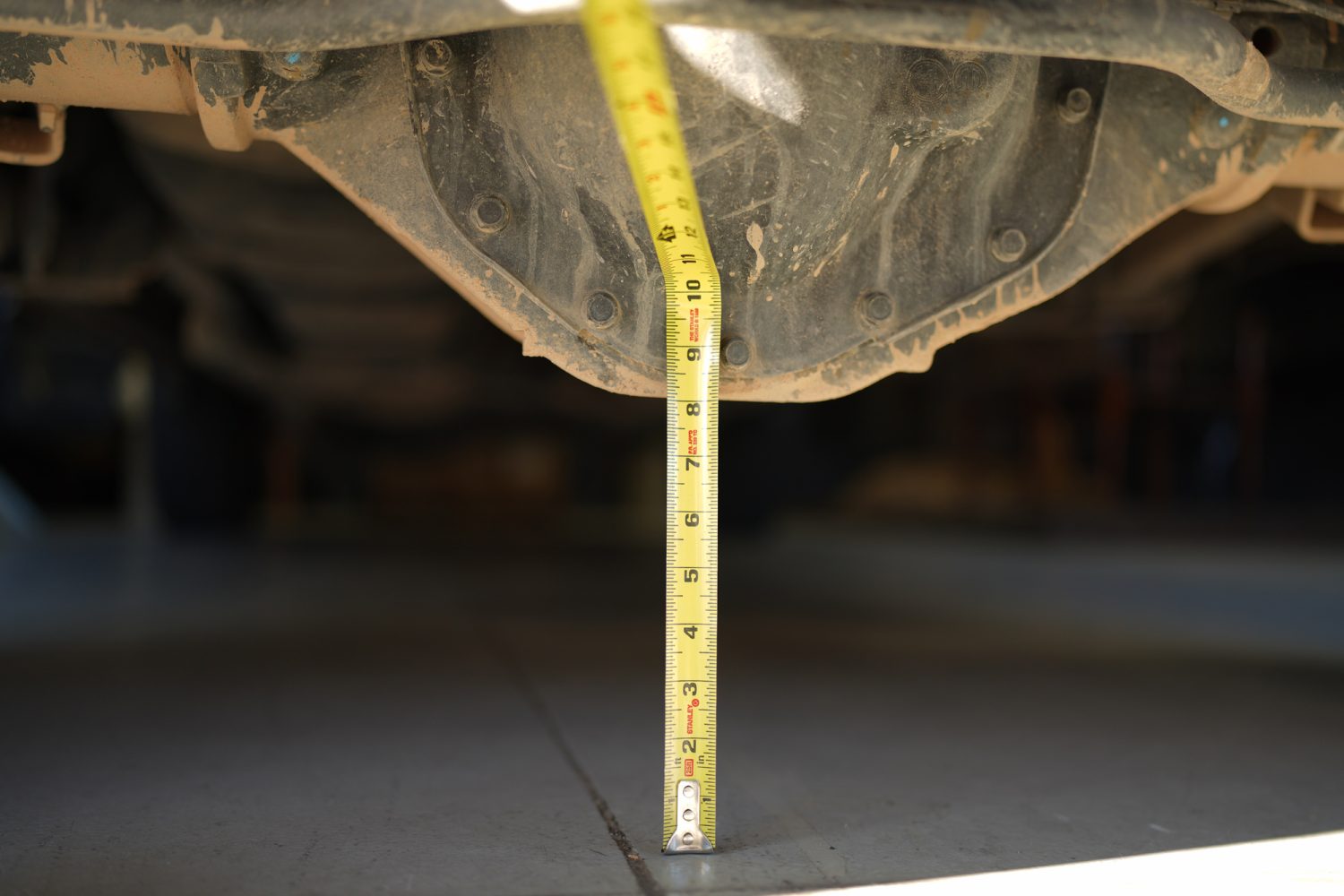
The lowest point on the ram 2500: the rear differential.
The biggest improvement in clearance was realized at the front differential with an additional 1.75 inches of ground clearance.
| Measuring Points | Ram 2500 OEM 4×4-tuned Suspension + 18-inch OEM Wheel and Firestone 33-inch AT tires | AEV Dualsport XP 3-Inch Lift + 17-inch Salta HD Wheel & 37-inch General Grabber A/Tx Tires |
| Front Radius Arms | 9 inches | 10.5 inches |
| Front Differential | 9 inches | 10.75 inches |
| Rear Differential | 8 inches | 9.5 inches |
*These measurements were taken using a tape measure, so their precision is limited.
Fuel Economy: This is one area where I did not make any improvements. Primarily due to the larger tires, I’ve seen my fuel economy drop by 2+ miles per gallon, depending on the nature of the road/trail. When towing the Airstream with a full load of water as well as the truck bed loaded with a spare, two ebikes, and various other cargo (and a Super Pacific Switchback X1 wedge camper – more on this addition in another article), I’ve seen our gas mileage drop as low at 9 mpg. Unladen around-town mileage averages between 12 and 13 miles per gallon, with highway mileage around 15+.
Relocating the Full-sized Spare: One thing that I had not considered with the lift was what I would do with our full-sized 37-inch spare tire. It will not fit underneath the Ram 2500 in the factory location, but lucky for us, we have a swing-out on our Expedition One Rangemax Ultra HD rear bumper.
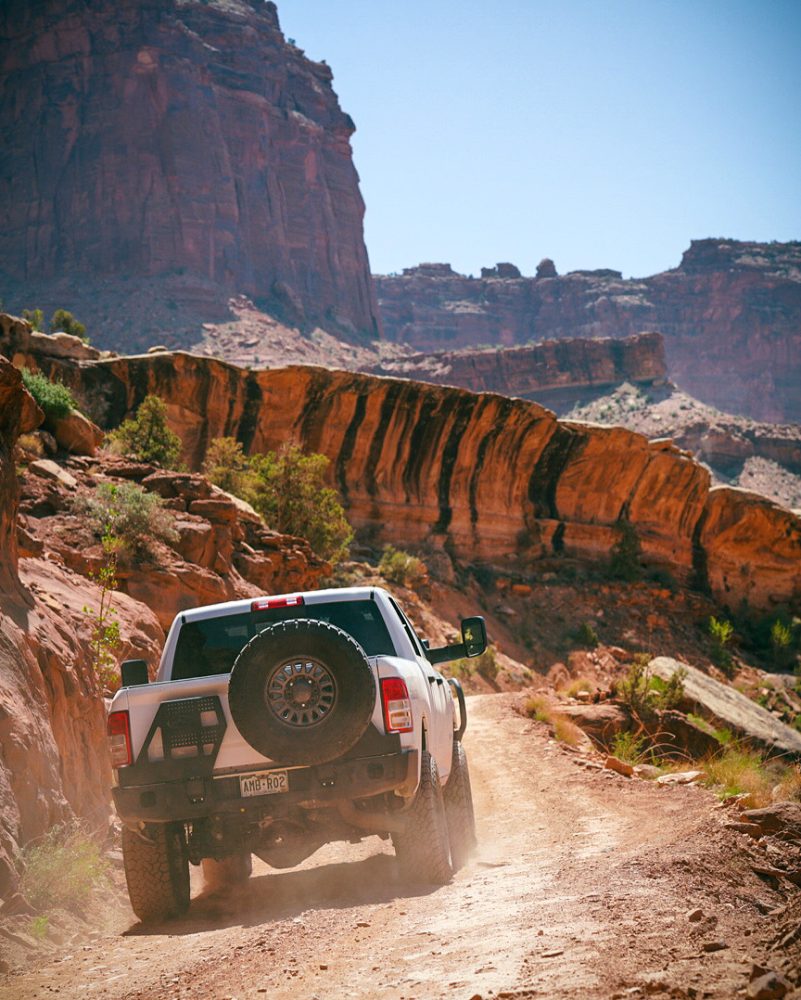
Unfortunately, because the propane tanks for our Airstream are located on the tongue of the trailer, we can’t tow with the spare mounted to the swing-out. In this configuration, if we were to turn too tightly, the spare would contact the propane tanks. For the moment, I don’t have a great solution other than using cam straps to secure the spare in the bed of the truck. It’s annoying, but it works.
Conclusion
In the quest to enhance the utility and performance of your overlanding rig, it’s important to realize that enhancing our own driving abilities is one of the best places to start. By this, I’m referring to professional off-road driver training and hours in the driver’s seat; these will allow you to learn the limits of your platform and how to use what you already have more effectively.
But who are we kidding? Installing premium aftermarket equipment can give us that little extra performance we’re looking for while also improving our vehicle’s aesthetics at the same time.
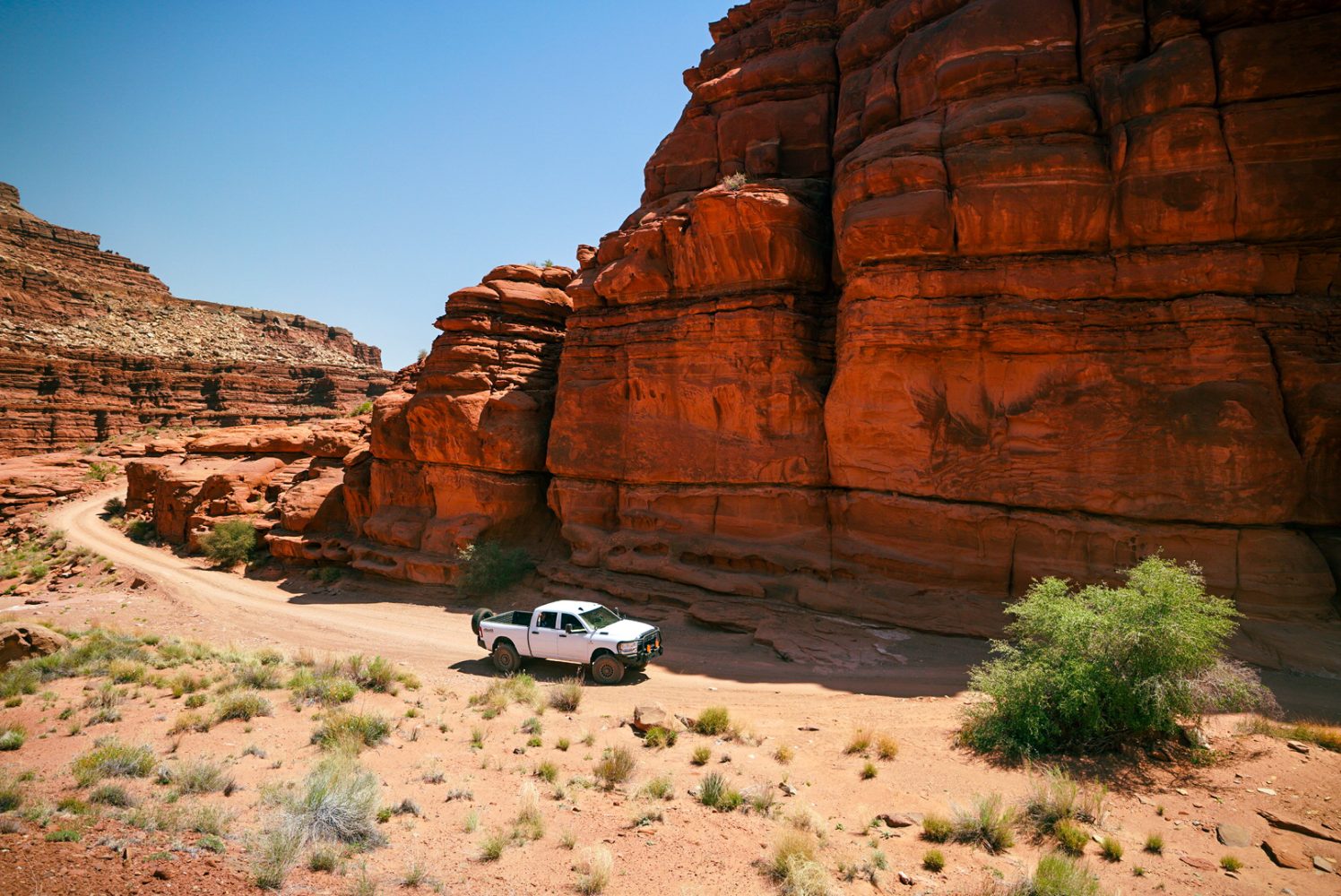
Upgrading suspension, wheels, and tires goes hand in hand. However, not all products are created equal. It’s very important to research your platform, speak to experts, and think critically about your options before making any investment. For my Ram 2500, (almost) all research led to AEV. And after putting close to 5,000 miles on my vehicle since installing the new equipment, I’ve been extremely pleased with the outcome.
While I didn’t gain large amounts of ground clearance, and I did sacrifice some miles per gallon, I have experienced a dramatic increase in driving comfort and improved handling characteristics. With the larger tires, airing down significantly increases my tire contact patch (surface area) for tackling loose or technical terrain where extra traction is needed. Airing down also dramatically increases trail comfort.

Finally, the added body height, body leveling, Onyx wheels, and larger tires have done wonders for the truck’s aesthetic. The 37-inch tires look much more correct on the full-sized platform, delivering a balanced, aggressive appearance.
For more information on the components outlined in this article:
AEV 3-inch Dualsport XP Suspension
AEV Nodular Iron Differential Covers
Our No Compromise Clause: We carefully screen all contributors to ensure they are independent and impartial. We never have and never will accept advertorial, and we do not allow advertising to influence our product or destination reviews.


